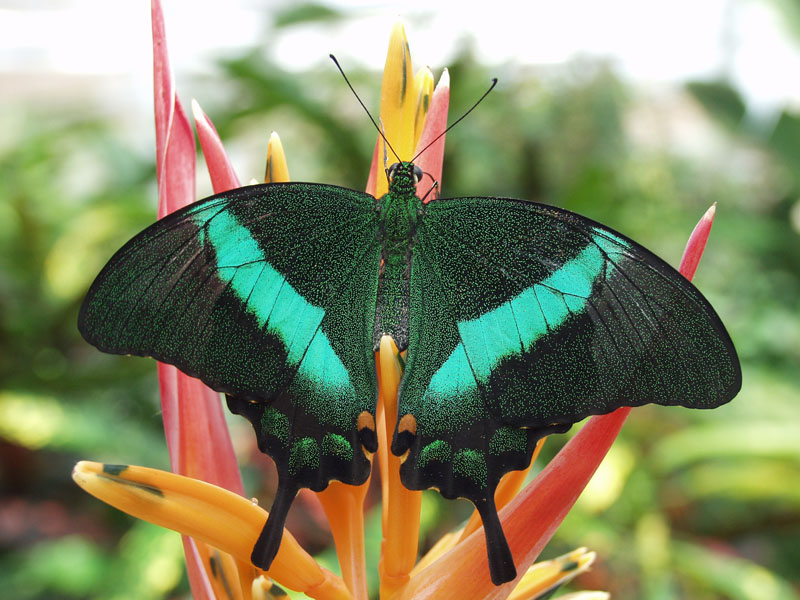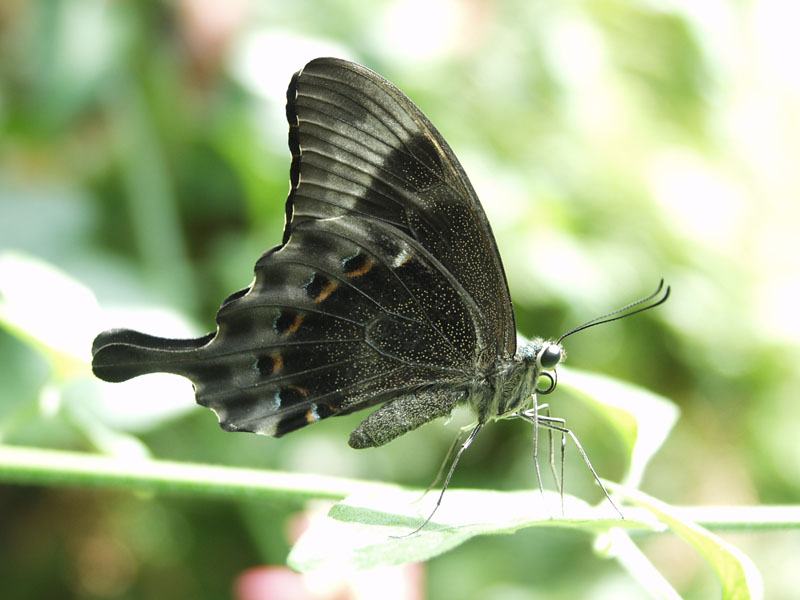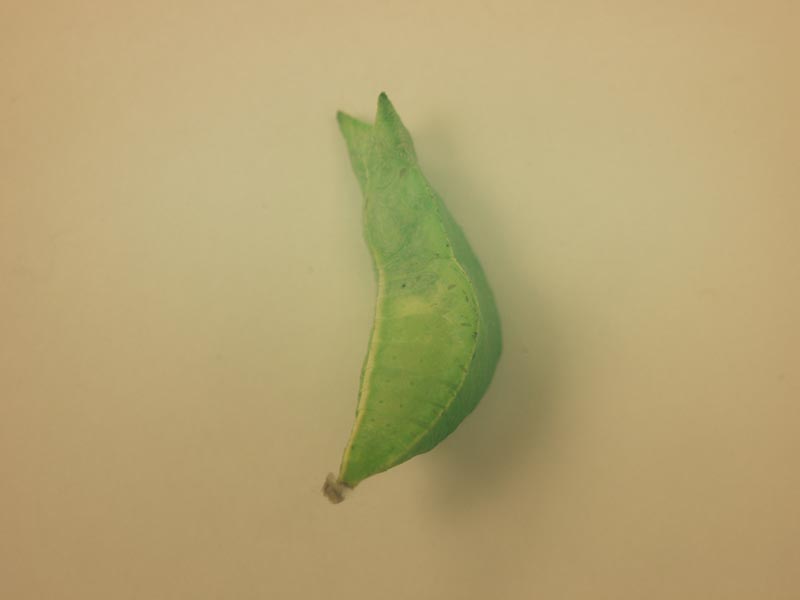


Adults can be found nectaring on a variety of flowers.
The genus Papilio is Latin for butterfly. In Greek mythology, Palinurus was a ship helmsman who sailed survivors away from Troy after its destruction.
Emerald Swallowtails are primarily found in forested areas but they are known to venture out into surrounding areas in search of nectar plants.
After mating, the female flies through the canopy laying her eggs on the leaves of the host plant. When the eggs hatch, the larvae feed on the leaves. Once the larvae have gone through all of their caterpillar instars, a chrysalis is formed on the woody portion of the host plant.
The flights of the Emerald Swallowtail in the wild is currently unknown.
The color and patterns seen on most butterflies are created by the overlapping scales and the color of the pigment on each scale. In the case of the Emerald Swallowtail, the scales on the inside of the wings are like small prisms which make the color iridescent. By looking from different angles, a change in color can be observed.